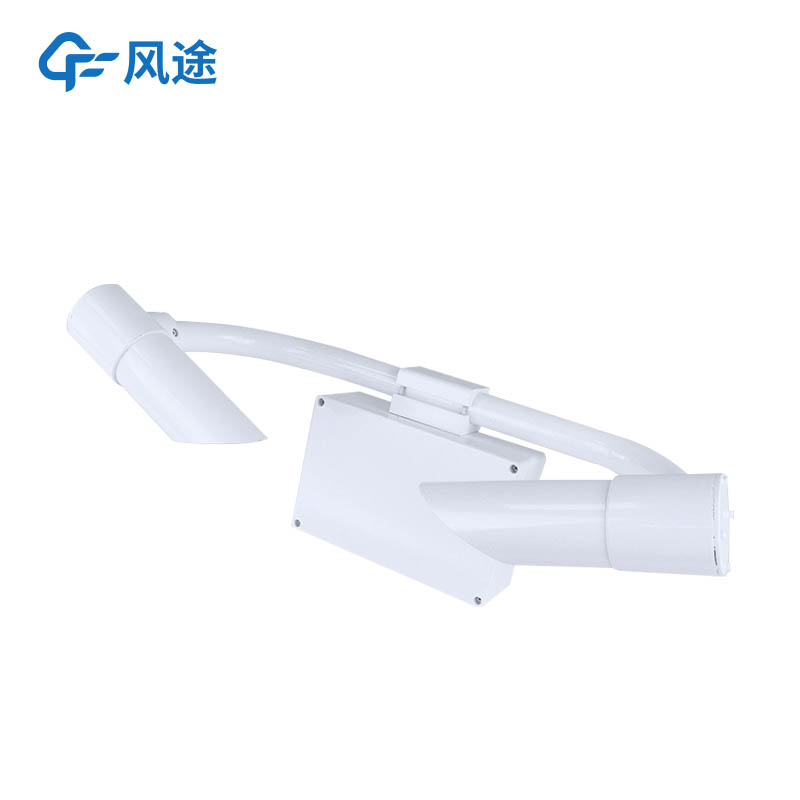Shandong Fengtu IOT Technology Co., Ltd
Sales Manager:Ms. Emily Wang
Cel,Whatsapp,Wechat:+86 15898932201
Email:info@fengtutec.com
Add:No. 155 Optoelectronic Industry Accelerator, Gaoxin District, Weifang, Shandong, China

Sales Manager:Ms. Emily Wang
Cel,Whatsapp,Wechat:+86 15898932201
Email:info@fengtutec.com
Add:No. 155 Optoelectronic Industry Accelerator, Gaoxin District, Weifang, Shandong, China

Model:FT-N50
Brand:fengtu
1. Visibility and Present Weather Sensor Product Introduction
Visibility and Present Weather Sensor is a laser-type sensor used to measure visibility. Additional options can be used to measure precipitation and snowfall.The N50 Visibility and Present Weather Sensor uses the forward scattering method to measure the total extinction coefficient of the air and then calculates the current visibility. It is widely used in road transportation, meteorology and other industries.
2. Visibility and Present Weather Sensor technical features
1. The instrument shell is made of high-quality aluminum material, which is spray-painted after anodizing. The whole machine has excellent waterproof, dustproof and anti-collision properties;
2. The transmitting and receiving lenses of the instrument are designed downward, which greatly reduces interference from stray light such as sunlight;
3. Weather phenomenon recognition, which can identify fog, rain, snow, mixed precipitation, sunny and other weather phenomena, with a high recognition rate;
4. Built-in watchdog circuit to ensure reliable and stable outdoor operation for a long time;
5. The instrument communication and power interfaces all include lightning protection designs, which greatly reduce lightning strikes and static electricity damage;
6.12~24V wide voltage power supply, total power is about 1W, very low power consumption, and can be powered by solar panels, batteries, etc. for a long time;
7. The digital interface uses RS485 or RS232, standard MODBUS protocol, no protocol adaptation is required;
8. The instrument can output 15s, 1min, and 10min visibility values, which can be read directly without configuration, making it more flexible to use.
3. Visibility and Present Weather Sensor implementation standards
QX/T 536-2020 Forward scattering visibility meter test method
4. Visibility and Present Weather Sensor technical indicators
| Main parameters | Parameter range | resolution | error |
| Measuring range | 50km | 1m | ≤2km ±2%2km~10km ±5%>10km ±10% |
| Repeatability | ≤4% | ||
| weather phenomenon | Fog, rain, snow, mixed precipitation, sunny | ||
| Weather phenomenon recognition rate | ≥95% | ||
| working temperature | -40~60℃ | ||
| Working humidity | 0~100%RH | ||
| Working power supply | 12~24V | ||
| Power consumption | 1W | ||
| size | 610x230x360mm (length x width x height) | ||
| weight | ≤10kg | ||
5. Visibility and Present Weather Sensor installation instructions
1. Installation location
The installation location of the visibility meter needs to be on an open, flat, unobstructed ground, away from buildings, trees, shrubs, peaks and other objects. This ensures that the instrument's observation range is not blocked and the data is more accurate.
Unnecessary optical interference should be avoided. The receiver of the visibility meter should be installed facing away from a strong light source (such as sunlight), and the transmitter and receiver should be located in the north-south direction.
2. Installation height
The installation height of the visibility meter should be greater than 1.5m and less than 3m. If the installation height exceeds 3m, the corresponding height should be calibrated.
3. Installation steps
3.1 Before installation, the user should prepare the upright column and install it on the upright column using the clamp provided with the instrument.
3.2 Lift the instrument to a suitable position and use the bolts behind the clamp to install and fix the visibility meter. During installation, ensure that the openings of the receiver and transmitter are facing downwards, otherwise they should be reinstalled.
Grid monitoring has achieved remarkable results in controlling air pollution. It can accurately locate pollution sources. By constructing a dense monitoring network in different areas, such as dividing ordinary grids in cities, setting encrypted grids in key areas, and arranging irregular grids in s...
Outdoor adventure activities such as camping, mountaineering, hiking and fishing have become popular choices for modern urbanites to pursue nature and relax. It is crucial to know the weather conditions of your destination before you set off, but traditional weather forecasts often have wide coverag...
What is the coverage area of a typical soil moisture station?Generally speaking, it is 20-30 acres.Farmers know that it is important to check the moisture content of the soil before planting, which is called "moisture content". If the moisture is good, the crop will grow well; if it is bad...
The Radar Water Level Monitoring Station mainly uses radar waves to measure the water level height, and its principle is as follows:The Radar Water Level Monitoring Station is equipped with a radar sensor, which emits high-frequency radar waves (usually in the microwave frequency band) towards the w...